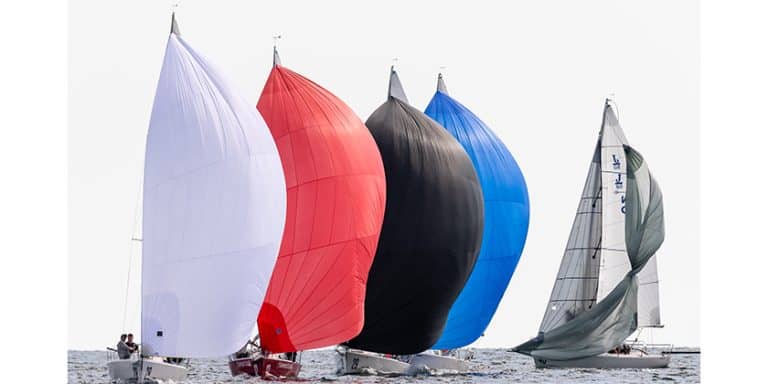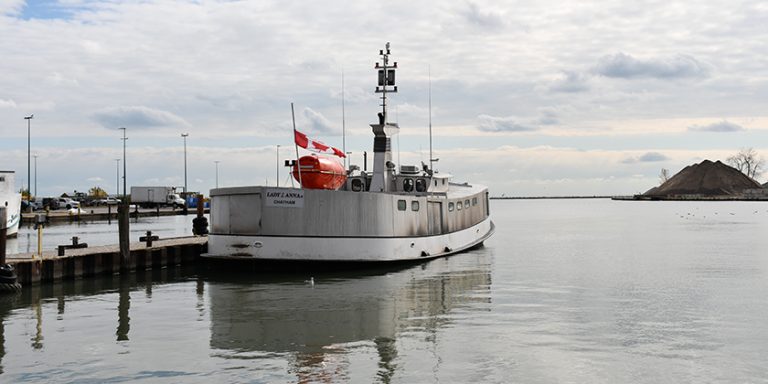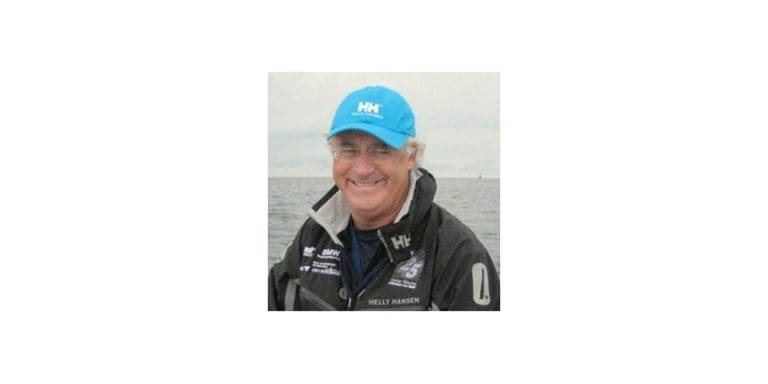Plugboats: America’s Cup hydrogen powered chase boat takes flight
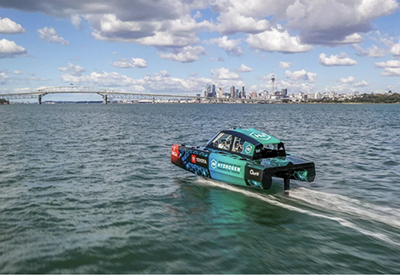
Apr 20, 2022
By Jeff Butler
Emirates Team New Zealand, who introduced foiling to America’s Cup competition in 2012, is innovating again with the launch of the first hydrogen powered zero emission chase boat.
Aptly christened ‘Chase Zero’, she made her debut April 7 in the same harbour where ETNZ unveiled the AC72 catamaran yacht ten years ago and changed the face of sail racing globally. The hope is Chase Zero will have the same kind of impact.
The six-seater is also a foiling catamaran, 32.8-ft-long (10 m), but instead of being propelled by the wind, each hull has hydrogen fuel tanks, fuel cells, batteries and electric motors.
“This project is all about proving how we can influence the global marine industry by producing a hydrogen powered foiling catamaran.” said team CEO Grant Dalton. “It is our hope that we can make a seismic shift into hydrogen power and an emission free statement for the industry.”
Hydrogen-electric power trains in each hull
 Chase Zero has been in development since last June and utilizes a membrane-free electrolysis technology that produces green hydrogen. Most hydrogen is created through a process that requires fossil fuels, whereas green hydrogen is made using none.
Chase Zero has been in development since last June and utilizes a membrane-free electrolysis technology that produces green hydrogen. Most hydrogen is created through a process that requires fossil fuels, whereas green hydrogen is made using none.
She is powered by two 80kW Toyota hydrogen fuel cells, one in each hull, which are each fed by two tanks of green hydrogen stored in gas form at a maximum pressure of 350bar. The hydrogen is passed through a catalyst which strips the electrons away from the H2 molecules. These electrons are used to power the boat and then return to the positively charged H+ ions which are combined with oxygen from the air, leaving nothing but pure H2O to exit the exhaust of the fuel cell.
With the twin electric motors of 220kW (approx 300HP), the boat can sail – or ‘fly’ – at about 30knots (34.5 mph/55.5 kph) with the 160kW generated from the fuel cells.
“The fuel cells provide the majority of the energy” explains Electrical Engineer Michael Rasmussen, “but there are also two 42kWh batteries which act as a filter for fast changes in power demand, when the boat may have to quickly reach speeds of 50 kts.”
“The response time of the fuel cell is much slower than available from the battery and a compromise in performance was not an option, so the battery supplies the bump and we are able to draw up to around 420kW for shorter periods. The fuel cell will then re-charge the batteries once there is excess power available again.”
180km on one fill of hydrogen
 The foiling is also an important part of the speed and range equation. “Travelling at 50 knots on the water requires a lot of power, and so foiling, like in sailing, was an obvious choice for us to reduce drag and therefore help to extend our range to around 180km on one fill of hydrogen.” Says Design Coordinator Dan Bernasconi.
The foiling is also an important part of the speed and range equation. “Travelling at 50 knots on the water requires a lot of power, and so foiling, like in sailing, was an obvious choice for us to reduce drag and therefore help to extend our range to around 180km on one fill of hydrogen.” Says Design Coordinator Dan Bernasconi.
If this were a fossil fuel boat, you can imagine what volumes of hydrocarbons would be burnt and emitted with 600 horsepower of ICE machinery. Emirates Team New Zealand COO Kevin Shoebridge says “This really is a considerable step forward in clean renewable energy in the marine industry.”
Hydrogen and the future of the America’s Cup
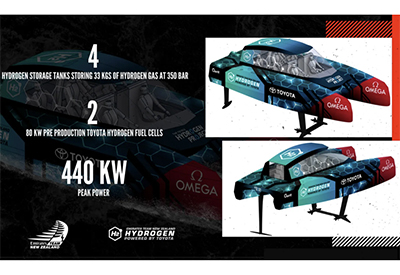 There is hope that the Protocol for the 37th America’s Cup will contain a provision that all teams must use hydrogen powered support boats. This would first need to be officially supported by the Challenger of Record, INEOS Team UK. If it does move forward it would also apply to other classes and hydrogen chase boats across the board and would have a considerable impact on reducing fossil fuels in the total America’s Cup event.
There is hope that the Protocol for the 37th America’s Cup will contain a provision that all teams must use hydrogen powered support boats. This would first need to be officially supported by the Challenger of Record, INEOS Team UK. If it does move forward it would also apply to other classes and hydrogen chase boats across the board and would have a considerable impact on reducing fossil fuels in the total America’s Cup event.
“Looking at Chase Zero foiling along today, it looks like a futuristic power boat,” noted Shoebridge. “But then you actually need to remind yourself that there are zero carbon emissions, it is basically water vapour coming out of the exhaust which is amazing when considering the positive environmental impact that can be made by reducing emissions from regular boat engines.
name: Chase Zero
designers: Emirates Team New Zealand (ETNZ)
LOA: 10.0 m
beam: 4.5 m
draft: 2.2 m
foil configuration: Primary π-foil, single T-rudder
displacement: 4800kg
fuel cells: 2 x Toyota 80kW
motors: 2 x 220kW
batteries: 2 x 42kWh
tanks: 4 x 8kg Hydrogen @ 350bar
cruise speed: 30kts
range: 180km (typical chase boat working cycle)
top speed: 50kts
 Jeff Butler is based in Toronto and is the Editor/Publisher of plugboats.com, the international website covering everything electric boats and boating. He is also President of the Electric Boat Association of Canada (electricboatassociation.ca ) and is busy preparing to bring electric motor boat racing and exhibitions to Toronto Harbour in 2023 for the first Toronto Solar Boat Races.
Jeff Butler is based in Toronto and is the Editor/Publisher of plugboats.com, the international website covering everything electric boats and boating. He is also President of the Electric Boat Association of Canada (electricboatassociation.ca ) and is busy preparing to bring electric motor boat racing and exhibitions to Toronto Harbour in 2023 for the first Toronto Solar Boat Races.


